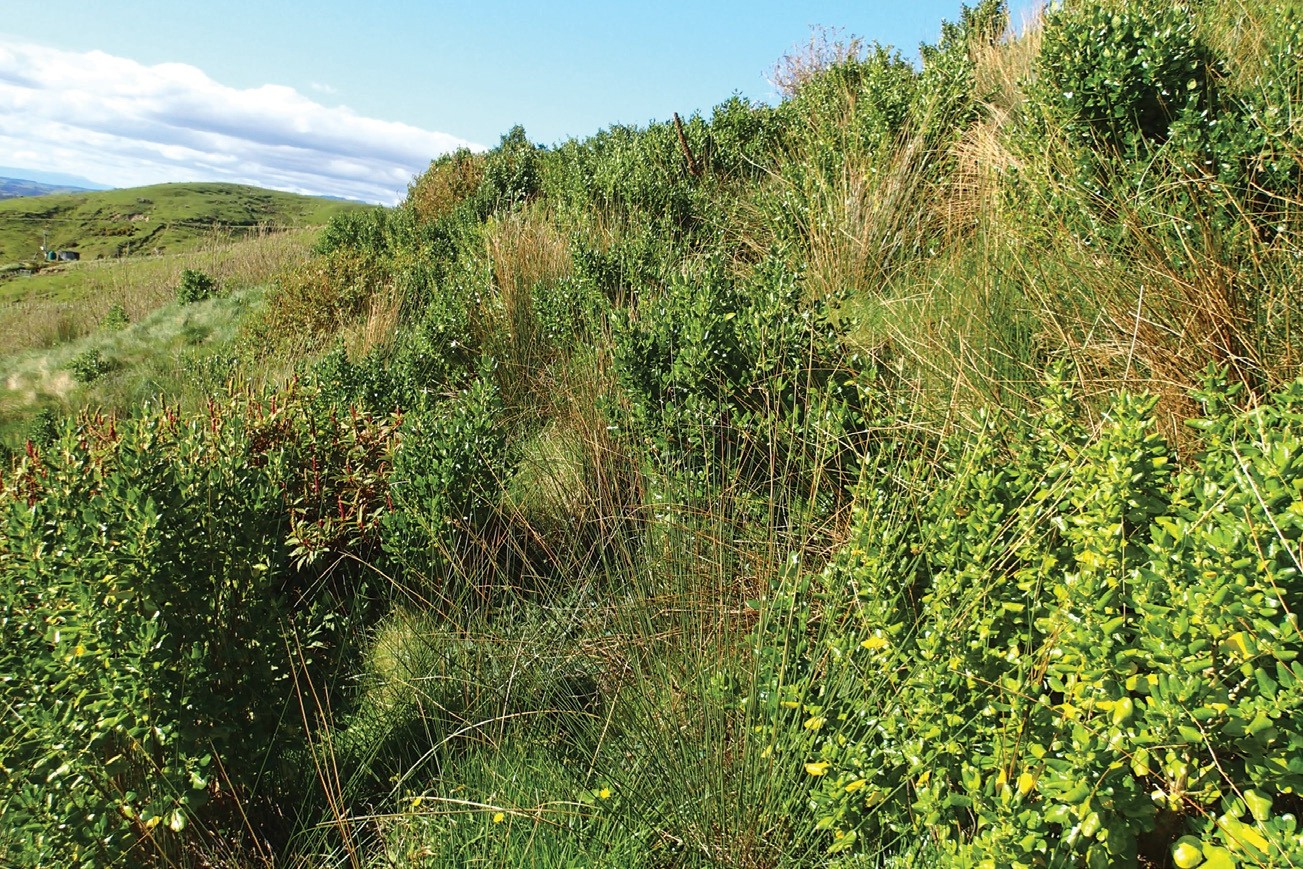Potential for native shrubs
Benefits of native species on hill country farms, highlighting their effectiveness in Cyclone Gabrielle were demonstrated at a field day at Massey’s Riverside farm, just north of Masterton,. Rebecca Greaves reports

 Woody vegetation on hill country farms provides a range of benefits, including reducing erosion, but cost remains a significant barrier to planting natives, Massey University’s James Millner says.
Woody vegetation on hill country farms provides a range of benefits, including reducing erosion, but cost remains a significant barrier to planting natives, Massey University’s James Millner says.
Millner presented to attendees at a field day at Massey’s Riverside farm, just north of Masterton, outlining the benefits of native species on hill country farms and highlighting their effectiveness in Cyclone Gabrielle.
Woody vegetation has many benefits for farmers including reducing erosion, increasing biodiversity, protecting infrastructure, aesthetic appeal and the ability to generate carbon credits.
On the flip side, the cost of establishing natives is difficult to overcome and there can be a drop in income if livestock numbers are reduced. However, Millner said the experience of many farm foresters showed planting 10-15% of the steeper country often had little to no impact on production, because of its low carrying capacity.
There is a strong relationship between slope angle and pasture production falling away. The steeper the slope, the less it grows and the higher the risk of erosion. After a slip, it takes decades to get back to maximum production.
Millner said hill country may be growing less pasture now than it was 20-30 years ago.
“Some farmers are worried about production and carrying capacity. You grow less grass on that class of land and the quality of the grass goes down and we struggle to get animals to eat it, as slope increases. Why not put it into woody vegetation?”
As well, pests such as deer, goats and plant pests, like Old Man’s Beard, need to be managed.
Millner presented sobering statistics gathered following Cyclone Gabrielle, which recorded more than 300,000 landslides, an estimated 300 million tonnes of soil lost and a staggering economic cost to the country of about $1.5 billion.
“We know we can prevent erosion by having woody vegetation onfarm,” he said.
Millner provided analysis showing exotic versus indigenous vegetation and its effectiveness in reducing erosion in the cyclone. While exotic forests did their job in some regions (though indigenous performed better), in the Gisborne region, there was no reduction at all in erosion with exotic forests.
A revegetation study at Tuapaka, Massey’s hill country property near Palmerston North, is looking at the use of native shrubs as a refuge for sheep once sufficiently grown and whether the plants can handle a light grazing.
The study includes three native species initially planted at 3200 plants/hectare. There are challenges around establishing natives and some are slow growing, but Millner says they have achieved good results with some species, particularly Coprosma.
“The metabolisable energy content of foliage is pretty good, it’s low in protein but we know some (plants) are palatable. If we wanted to use a block of natives as a refuge, evidence suggests animals will be pretty happy to utilise it. What we want to know is how well the shrubs recover from a light grazing.”
Millner concluded by saying the benefits from natives were tangible, but the cost of establishment and ongoing maintenance were a major barrier to widespread uptake.
The price of natives is generally >$3/plant, plus there is the cost of planting and weed control. The total cost of planting natives at Tuapaka was $11,000-$12,000/ha.
“We need to get establishment costs down for this to be viable on a large scale.”




